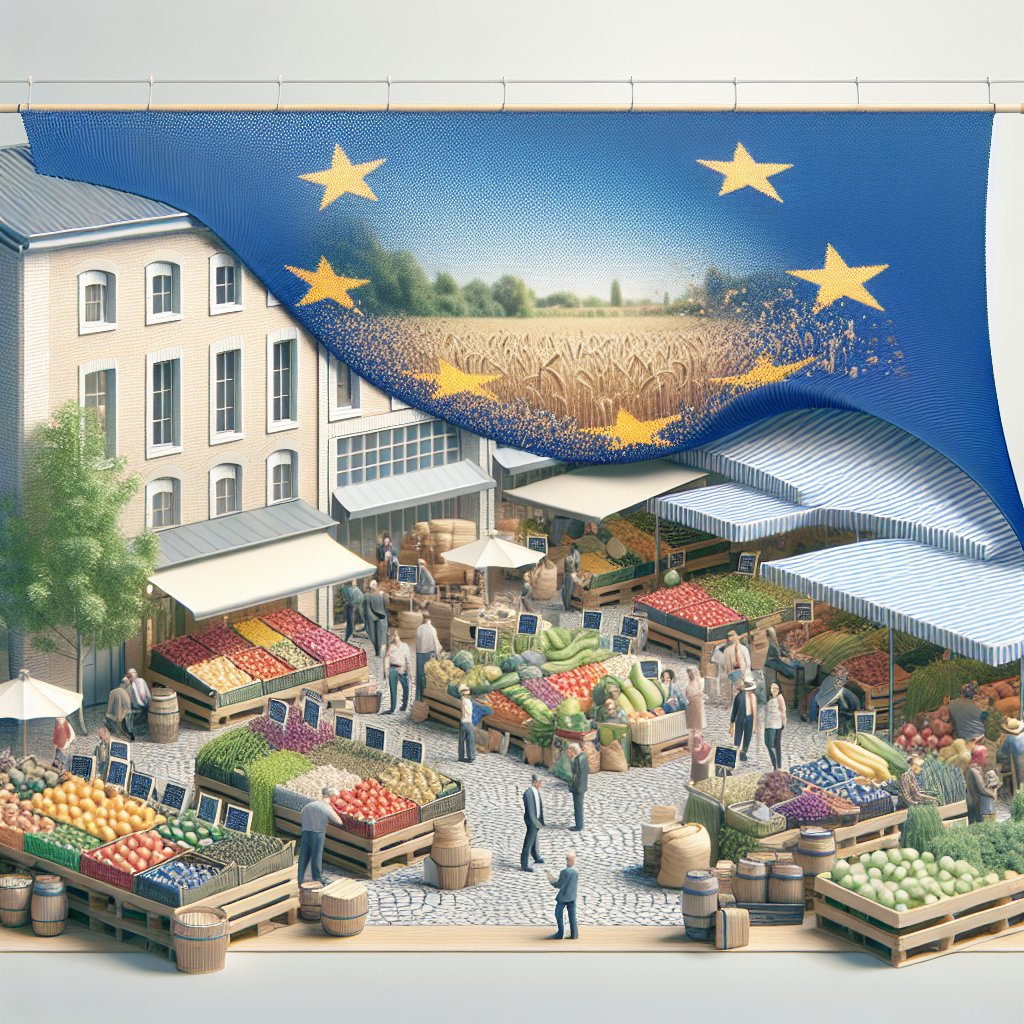The impact of the European Union’s agricultural policy on the prices of agricultural products is a complex and multifaceted issue that affects farmers, consumers, and the economy as a whole. The Common Agricultural Policy (CAP), which has been a cornerstone of EU policy since its inception, plays a crucial role in shaping agricultural markets and influencing price levels across member states. This article will explore the various dimensions of this impact, examining both the mechanisms through which EU policy affects prices and the broader implications for the agricultural sector.
Understanding the Common Agricultural Policy (CAP)
The Common Agricultural Policy (CAP) was established to support farmers, ensure food security, and promote sustainable agricultural practices within the European Union. Over the years, the CAP has undergone several reforms aimed at adapting to changing economic, social, and environmental conditions. The policy primarily consists of two pillars: direct payments to farmers and rural development programs.
Direct Payments and Market Stabilization
Direct payments are a significant component of the CAP, providing financial support to farmers based on the area of land they cultivate. These payments are designed to stabilize farmers’ incomes and encourage them to maintain agricultural production. By providing a safety net, direct payments can influence the prices of agricultural products in several ways:
- Income Support: Direct payments help farmers cover their production costs, allowing them to remain competitive in the market. This support can prevent drastic price fluctuations that might occur due to sudden changes in supply or demand.
- Production Decisions: With guaranteed income from direct payments, farmers may be more inclined to produce certain crops, which can lead to an oversupply of specific products and subsequently lower prices.
- Market Confidence: The assurance of direct payments can instill confidence in farmers, encouraging them to invest in their operations and adopt innovative practices that can enhance productivity and quality.
Rural Development Programs
The second pillar of the CAP focuses on rural development, aiming to improve the competitiveness of the agricultural sector, enhance the environment, and promote social inclusion. These programs can also indirectly influence agricultural prices:
- Investment in Infrastructure: Rural development initiatives often include investments in infrastructure, such as transportation and storage facilities, which can reduce costs and improve market access for farmers. This can lead to more stable prices as supply chains become more efficient.
- Innovation and Sustainability: By promoting sustainable practices and innovation, rural development programs can help farmers increase their productivity and reduce costs, which can positively impact prices in the long run.
- Market Diversification: Supporting diversification in rural areas can lead to a broader range of products available in the market, which can help stabilize prices by reducing dependency on a few key crops.
The Role of Market Interventions
In addition to direct payments and rural development programs, the EU employs various market intervention measures to stabilize agricultural prices. These interventions are particularly important during periods of market volatility, such as during crises or when prices fall below a certain threshold.
Price Support Mechanisms
The EU has established several price support mechanisms to protect farmers from extreme price fluctuations. These include:
- Intervention Buying: The EU can purchase surplus products from the market to prevent prices from falling too low. This mechanism is particularly relevant for staple commodities like cereals and dairy products.
- Private Storage Aid: In times of oversupply, the EU may provide financial assistance to farmers for storing their products until market conditions improve, thereby helping to stabilize prices.
- Export Subsidies: To enhance the competitiveness of EU agricultural products on the global market, the EU may offer export subsidies, which can help maintain price levels within the EU by reducing surplus production.
Impact of Global Market Trends
While EU agricultural policy plays a significant role in determining prices, it is essential to recognize the influence of global market trends. Factors such as international trade agreements, global demand for agricultural products, and climate change can all impact prices. For instance:
- Global Demand: Increasing demand for food in emerging markets can drive up prices for certain agricultural products, benefiting EU farmers. However, this can also lead to increased competition from non-EU producers.
- Trade Agreements: The EU’s trade agreements with other countries can affect the prices of agricultural products by either opening up new markets or increasing competition from imports.
- Climate Change: Environmental factors, including climate change, can impact crop yields and production levels, leading to fluctuations in prices. The CAP aims to address these challenges through sustainable practices and support for adaptation.
Conclusion: Balancing Policy and Market Forces
The influence of the European Union’s agricultural policy on the prices of agricultural products is a dynamic interplay of various factors. While the CAP provides essential support to farmers and aims to stabilize prices, it must also adapt to the realities of a globalized market. As the agricultural sector faces new challenges, including climate change and shifting consumer preferences, the EU’s policies will need to evolve to ensure that they continue to support farmers while promoting fair prices for consumers.
Ultimately, a balanced approach that considers both policy interventions and market forces will be crucial for the future of agriculture in the EU. By fostering innovation, sustainability, and resilience, the EU can help create a more stable and prosperous agricultural sector that benefits all stakeholders involved.




